Note: This article was written with assistance from the National Telecommunications and Information Administration of the U.S. Department of Commerce, and portions of the article will appear in a paper to be presented at TPRC 44 beginning on September 30th.
Seventy-five percent of Americans reported using the Internet in July 2015, but the longstanding disparity between urban and rural users persists and has emerged in the adoption of new technologies such as the smartphone and social media[1]. This suggests that in spite of advances in both policy and technology, the barriers to Internet adoption existing in rural communities are complex and stubborn. In particular, Americans who were otherwise less likely to use the Internet—such as those with lower levels of family income or education—faced an even larger disadvantage when living in a rural area. Conversely, rural individuals with higher levels of education or family income did not have significantly lower adoption rates than their urban counterparts.
Common wisdom says this is due to lack of availability; not so. The National Broadband Map shows the vast majority of the country has access to wireless Internet, and data tells us the number one reason for non-adoption is lack of interest rather than lack of access. It turns out the true explanation for lower adoption rates in rural areas is elusive and hard to pin down.
Area of United States covered by at least one wireless broadband provider as of June, 2014
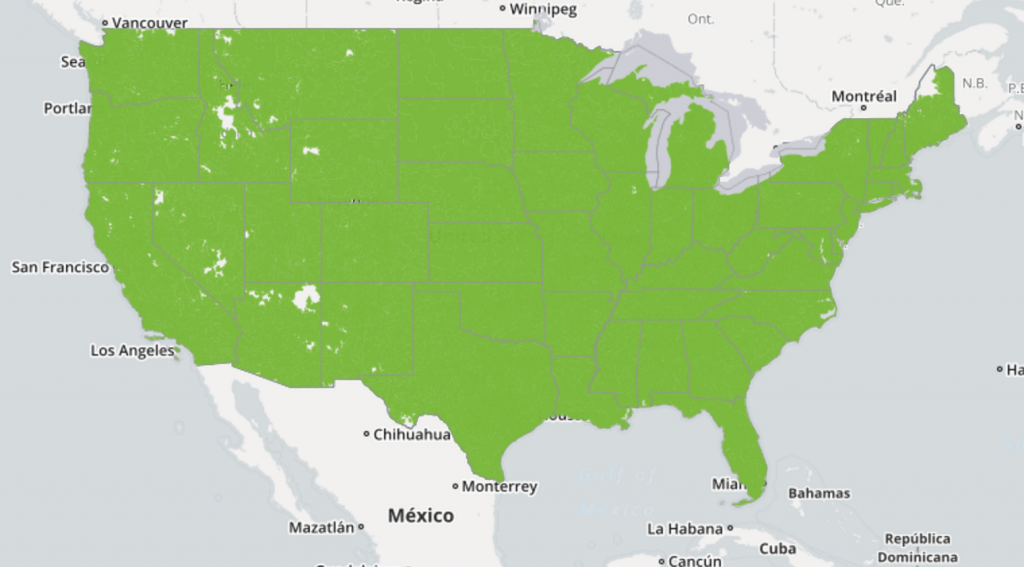 Source: National Broadband Map, Created by National Telecommunications and Information Administration and the Federal Communications Commission
Source: National Broadband Map, Created by National Telecommunications and Information Administration and the Federal Communications Commission
View of the Rural Divide
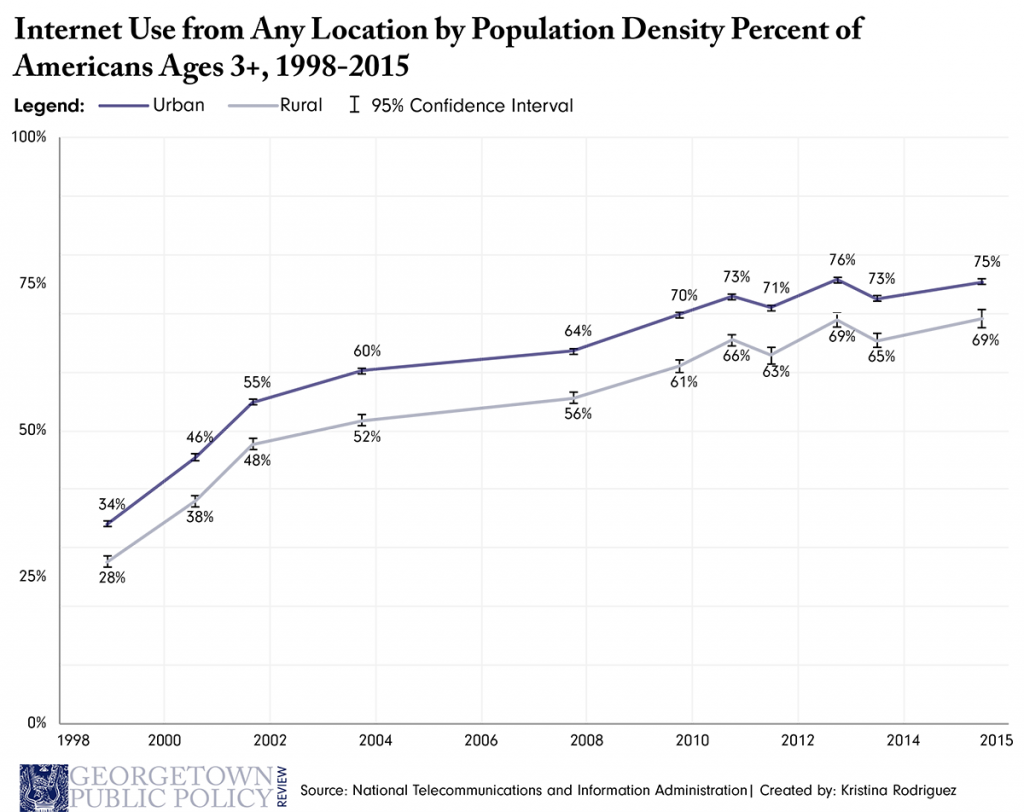
While the digital divide appears to be closing for some demographic communities, the gap between rural and urban populations has remained remarkably consistent. In 1998, 28 percent of Americans living in rural areas used the Internet, compared to 34 percent of those in urban areas. Even as Internet use increased dramatically overall, a rural/urban gap remained in 2015, with 69 percent of rural residents reporting using the Internet, versus 75 percent of urban residents. This data indicates a fairly constant 6-9 percentage point gap between rural and urban communities’ Internet use over time.
The Rural and Urban Divide Further Limits Low Probability Adopters
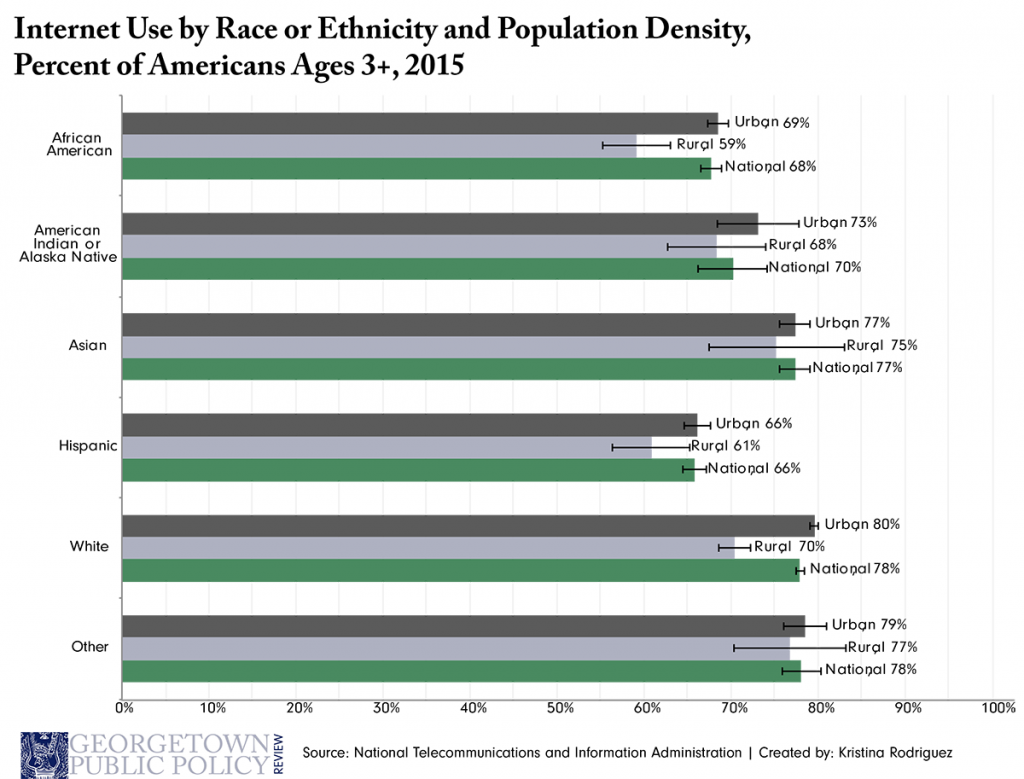
All persons, regardless of race or ethnicity, were less likely to use the Internet when living in rural areas, but certain groups of rural residents face a particularly large digital divide. For example, 78 percent of Whites nationally used the Internet in 2015, compared to 68 percent of African Americans and 66 percent of Hispanics. In rural areas, 70 percent of White Americans had adopted the Internet, compared to 59 percent of African Americans and 61 percent of Hispanics.
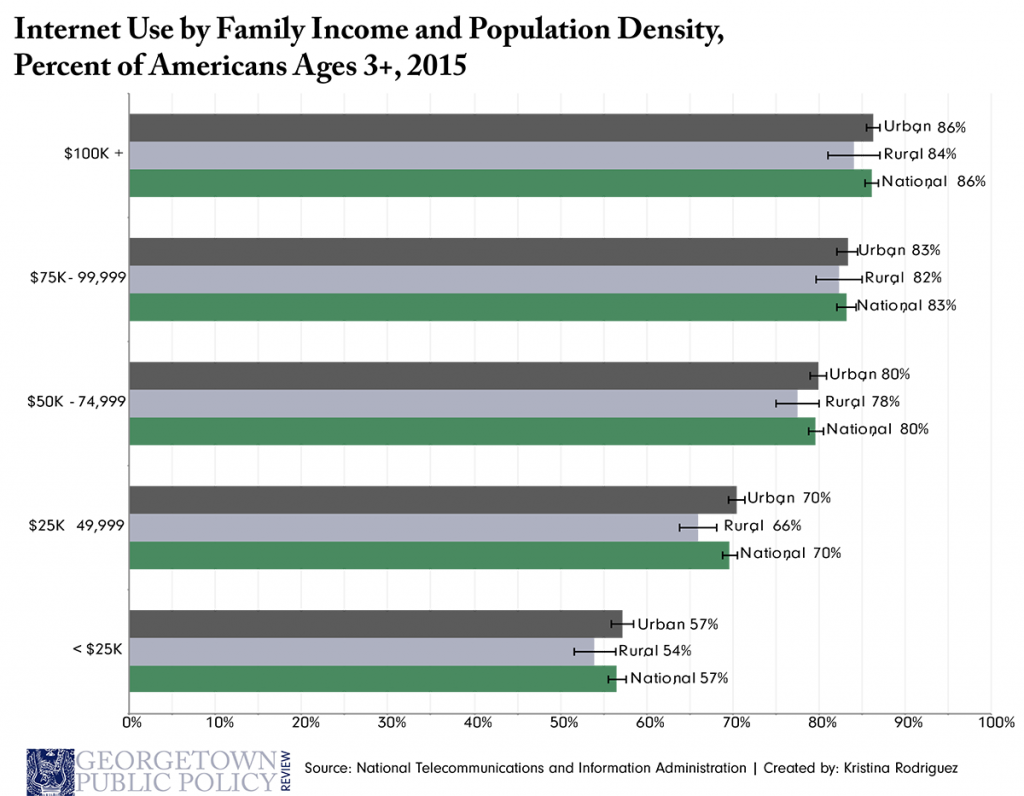
The digital divide also varied by family income. Nationally, Americans with family incomes between $75,000 and $99,999 per year adopted the Internet at an 83 percent rate, compared to 80 percent of those reporting income between $50,000 and $74,999, and 70 percent of those in the $25,000 to $49,999 range. These disparities were even higher among low-income rural residents. The biggest gap in Internet use between rural and urban Americans based on income came among those with incomes between $25,000 and $49,999; 66 percent of rural residents in that income range used the Internet, compared with 70 percent of their urban counterparts. In contrast, rural residents earning between $75,000 and $99,999 adopted the Internet at about the same rate as their urban counterparts.
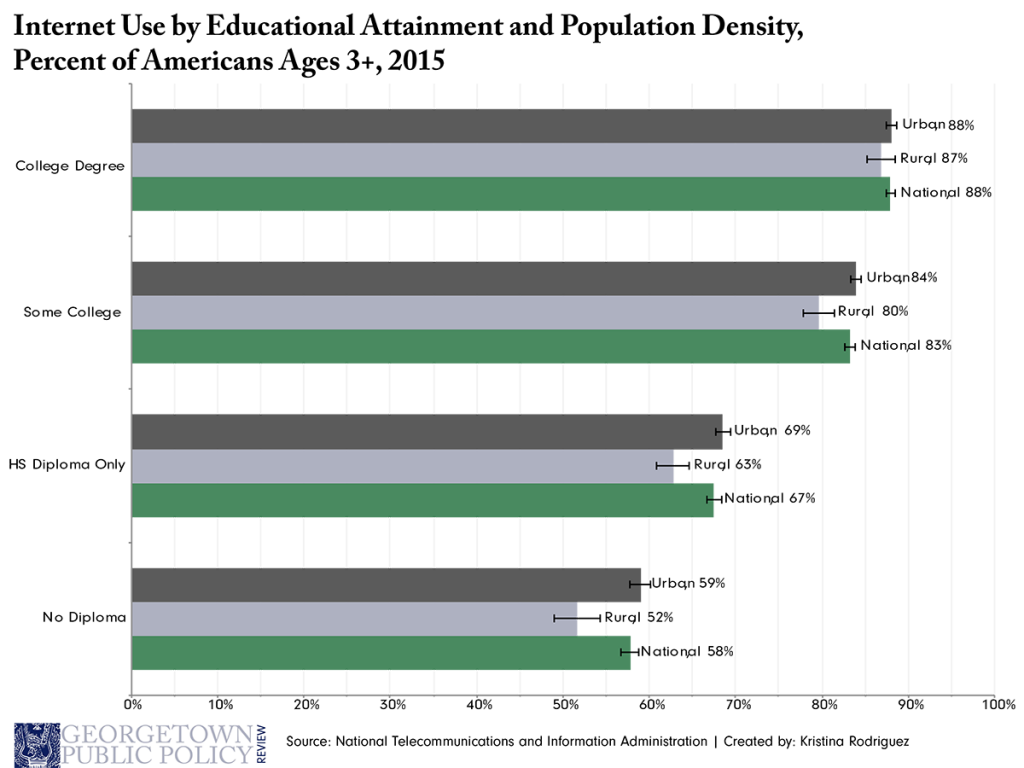
People with lower levels of educational attainment were even more likely to find themselves on the wrong side of the digital divide when living in a rural area. The divide was greatest between rural and urban users without a high school diploma. Only 52 percent of those who lack a high school diploma and live in a rural area reported using the Internet, compared with 59 percent of those who live in urban households with a similar level of education. The gap was a little smaller for high school graduates, where 63 percent of rural residents reported Internet use compared with 69 percent of urban residents and 67 percent of all Americans. Eighty-eight percent of Americans with a college degree used the Internet nationally, with rural and urban college graduates adopting at approximately the same rate.
Digital Divides Beyond Internet Adoption
Living in a rural area was also associated with lower levels of device use, internet use at particular locations, and participation in online activities. Overall, we found rural users were less likely than their urban counterparts to report using a desktop—29 percent for rural users to 35 percent for urban users, a laptop 39 percent to 48 percent, a tablet 24 percent to 30 percent, or an Internet-enabled mobile phone 45 percent to 54 percent. Rural residents were also less likely to use the Internet from home 61 percent to 69 percent and at work 22 percent to 29 percent. In terms of online services and functions, rural residents who indicated they did use the Internet were still less likely than urban residents to use email 86 percent to 92 percent, social media 68 percent to 71 percent, and online video or voice conferencing 28 percent to 38 percent than Internet users in urban areas. While some of these differences may seem relatively modest, they are statistically significant. Lastly, rural individuals were more likely than their urban counterparts not to own any Internet compatible devices 33 percent to 26 percent, and were less likely to own more than one device.
Isolating the Effect of the Rural-Urban Divide via Regression
There may be a number of other factors at work in explaining the rural-urban divide, beyond what these summary statistics can tell us. There are other factors that may influence adoption rates such as age and gender, and persons cut across multiple demographics where a person can be both well educated and less likely to adopt, but also poor and therefore more likely to adopt. To control for these factors and isolate the impact of living in a rural area, we construct a probit regression model[2],[3]. Our model indicates the isolated effect of living in a rural area is a 4 percentage point decrease in likelihood of Internet adoption than if one lived in a rural area. This means there is some aspect of living in a rural area that our model indicates cannot be explained by these other demographic features.
Note however, that the model can only explain a fraction of variation within the data, meaning there are still many factors driving Internet adoption rates the model cannot account for. This may mean the urban-rural divide is driven by intrinsic, hard to measure factors that our currently available data cannot capture. Some of these factors may be driven by cultural preferences, where the same preferences that lead a person to live in a rural area may be associated with the same preferences that drive non-adoption. We cannot be sure, but it’s worth drawing attention to, as future policy solutions aimed at redressing the digital divide should perhaps be sensate to these cultural preferences to maximize efficacy.
[1] Data for this article comes from NTIA’s supplement to the Current Population Survey https://www.ntia.doc.gov/category/data-central.
[2] Probit models are tailored to fit binary outcome variables of interest, in this case, is a person an Internet adopter or not.
[3] In our model we control for whether a person lives in a rural or urban area, their race, income, education, employment status, age, gender, disability status, citizenship status, region of the country, and a quadratic transformation of age because Internet adoption tends to be low at very low and very high ages.
Justin Goss is a second year Master of Public Policy student and hails from the Silicon Valley area and migrated a short two hours north to the pastoral lands of Davis, CA where he majored in Political Science and Philosophy amongst the bovine co-residents Davis is best known for. His policy interests include energy policy, tech policy, and most recently health policy. He has experience working in government at the Federal and State levels.
